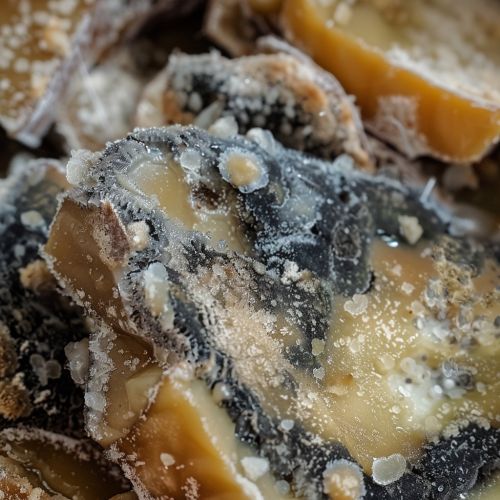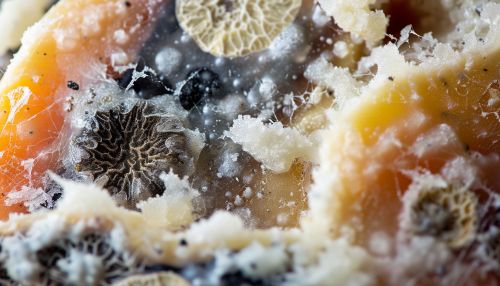Food Spoilage
Introduction
Food spoilage is a process that occurs when food products undergo undesirable changes in their color, texture, smell, and taste, rendering them unsuitable for consumption. This process is primarily caused by the growth of microorganisms, chemical reactions, and the enzymatic action within the food itself. The understanding and prevention of food spoilage is a key aspect of food safety, food science, and food preservation.
Causes of Food Spoilage
Food spoilage can be caused by a variety of factors, including microbial growth, enzymatic activity, and chemical reactions.
Microbial Spoilage
Microbial spoilage is caused by the growth of microorganisms such as bacteria, yeasts, and molds on the food. These microorganisms can produce enzymes that break down the food's components, leading to changes in its color, texture, smell, and taste. The types of microorganisms that can cause food spoilage include bacteria, yeasts, and molds.


Enzymatic Spoilage
Enzymatic spoilage is caused by the action of enzymes within the food itself. These enzymes can break down the food's components, leading to changes in its color, texture, smell, and taste. This type of spoilage is common in fruits and vegetables, which contain enzymes that can cause browning, softening, and other changes.
Chemical Spoilage
Chemical spoilage is caused by chemical reactions that occur within the food. These reactions can be triggered by factors such as heat, light, and oxygen, and can lead to changes in the food's color, texture, smell, and taste. Examples of chemical spoilage include the rancidity of fats and oils, and the oxidation of fruits and vegetables.
Prevention of Food Spoilage
The prevention of food spoilage involves a variety of strategies, including proper storage, preservation techniques, and the use of antimicrobial agents.
Proper Storage
Proper storage can significantly reduce the rate of food spoilage. This involves storing food at the appropriate temperature and humidity level, and protecting it from contamination. For example, perishable foods such as meat, dairy products, and fruits and vegetables should be stored in the refrigerator, while dry foods such as grains and spices should be stored in a cool, dry place.
Preservation Techniques
Preservation techniques can also help to prevent food spoilage. These techniques work by inhibiting the growth of microorganisms, slowing down enzymatic activity, or preventing chemical reactions. Examples of preservation techniques include canning, freezing, drying, pickling, and fermentation.
Use of Antimicrobial Agents
The use of antimicrobial agents can also help to prevent food spoilage. These agents work by killing or inhibiting the growth of microorganisms. Examples of antimicrobial agents include preservatives, salt, sugar, and acids.
Impact of Food Spoilage
Food spoilage has a significant impact on food safety, food waste, and economic loss.
Food Safety
Spoiled food can pose a serious risk to food safety, as it can contain harmful microorganisms that can cause foodborne illnesses. Therefore, it is important to properly handle and store food to prevent spoilage and ensure food safety.
Food Waste
Food spoilage is a major contributor to food waste, as spoiled food is often discarded. This not only leads to a waste of food, but also a waste of the resources used to produce, transport, and store the food.
Economic Loss
Food spoilage also leads to economic loss, as it reduces the shelf life of food products and results in lost sales for food businesses. Therefore, the prevention of food spoilage is not only important for food safety and waste reduction, but also for economic sustainability.
